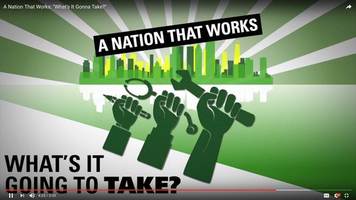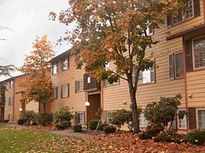|
The All Home Strategic Plan includes strategies around
employment as a means to make homelessness rare, brief and one-time. By quickly
connecting people to employment or creating opportunities to increase earned
income, families and individuals experiencing homelessness often have the
ability to resolve their housing crisis or limit the amount of support needed
from the homeless system. However, we know that getting and maintaining a
livable wage and meaningful job is often not a simple endeavor. This is particularly
true for people of color who are more likely to experience poverty, not have
access to satisfactory education and regardless of social strata, face racial
discrimination. Another limiting factor that contributes to higher unemployment
for people of color is the criminal justice system. Black men are 9 times more
likely to be incarcerated than white men. Studies have shown that serving time
reduces earnings by 40%, perpetuating poverty and in some cases, homelessness.
Last week the Heartland Alliance
brought together homeless and workforce providers, policy makers, elected
officials and advocates to challenge chronic unemployment and its impact on
homelessness and poverty at A Nation That Works Conference. Speakers
and workshop panelists challenged attendees to find ways for to create a
culture that believes everyone has strengths and can work if they have the
desire to by offering innovative ideas and strategies that are making a
difference around the nation. In the video below, participants from all over
the United States share what they believe can end poverty and chronic
unemployment.

Recent reports from Focus
Strategies and Barbara Poppe have encouraged our community to fund what works. Rapid rehousing is one strategy that they
recommend we expand. This week, Crosscut
published an article sharing a local story on Rapid Re-housing.
Rapid re-housing uses a flexible model to provide the
right amount of service and time an individual or family may need to end their
episode of homelessness. Rapid re-housing doesn’t make assumptions about who
will or won’t be successful in the program; it instead offers an opportunity to
quickly re-enter housing so clients can begin to stabilize and heal. In fact,
in King County many of the people who have utilized rapid re-housing, were
screened out of other homeless housing opportunities because of barriers such
as criminal record and eviction history.
Rapid re-housing is working, nationally and here in King
County. 1,249 households last year stayed in permanent housing after their
rental assistance ended, and 95% had not become homeless again after 12 months.
Building a successful, system-wide rapid
re-housing program requires commitment from many partners. As a
community we have work to do to align with the national model for delivering
rapid-rehousing and ensuring that all those experiencing homelessness have a
fair chance at housing. The National Alliance to
End Homelessness has recently released five strategies to help communities
build a foundation from which to grow the intervention and serve more people:
Build the Evidence:
Identify what is needed to build and advance knowledge of the
effectiveness of rapid re-housing, improve our understanding of how best to
deliver rapid re-housing and inform the development of a research agenda.
Adopt Standards of Excellence and Practice: Identify the most important activities to promote
the adoption of quality rapid re-housing programs, ensuring compliance with
‘standards of excellence,’ and improving our understanding of what is good
practice.
Make Rapid Re-Housing Part of a System: Ensure that rapid re-housing is appropriately
scaled, is an integral part of a homeless service system, and is supported by
all other key actors.
Expand the Role of Local/State and Federal Partners: Identify the most important actions of other
systems to ensure households being rapidly re-housed have the supports they
require to achieve stable housing and to thrive.
Acquire New Resources for Rapid Re-Housing: Increase new resources for rapid re-housing through
strategic use of funding, harness mainstream systems, and ramp-up federal
and state funding through advocacy.
 In light of recent eviction notices at multiple properties
in the City of Renton, All Home took two actions. All
Home secured philanthropic funding to support the families being evicted
from Renton Woods Apartments by out-of-state property owners. These funds will
allow these families, and children, to pay the fees necessary to get into their
new homes. The Julia Love Pritt Family Foundation has stepped up,
with a generous and responsive gift of $25,000. The City of Renton and local
nonprofits are also supporting these families to relocate. However, these
types of evictions are happening county, and statewide. We cannot expect local
government and philanthropy to come to the rescue every time. Therefore, All
Home adopted a policy
statement on source of income discrimination (SOID) urging all cities in King
County to adopt laws to protect renters from being evicted or screened
out of housing on the basis of their source of income. In addition to
advocating for SOID protections at the local level, we have also called for a
statewide ban through our State
Legislative Priorities for the 2017 legislative session.
|
This week HUD released
three-year impact results for their Family Options Study, a long-term
randomized control trial comparing the impact of four different approaches to
ending family homelessness. The study
randomly assigns families to receive either 1) a permanent housing subsidy
(likely a Section 8 voucher) without supportive services, 2) Community-Based
Rapid Rehousing (minimal services) , 3) Project Based Transitional Housing
(with services), or 4) Usual care (an emergency shelter stay). Results have
been released in waves – this week’s results are from the 3 year follow-up. HUD
has previously released baseline results that discuss assignment to
intervention, as well as short-term results from 18 months after assignment.
The reports can be found here.
Key findings are as
follows:
As in the 18 month follow-up, families who receive permanent subsidies do best in multiple areas,
including housing stability, family preservation, well-being, mental health,
and substance abuse for parents, and educational outcomes for children.
Permanent subsidies have better outcomes than rapid rehousing, transitional
housing, and usual care. At the 18 month follow up, permanent subsidies were
less costly than many other interventions. As expected, they are now modestly more expensive, costing approximately 10% more
than alternatives. The cost of permanent subsidies will continue to rise over
time.
Taken together, study results support the theoretical model
that family homelessness is primarily a
housing affordability problem. Housing subsidies are closely tied to
positive outcomes, while the provision of services is not. Study findings do
not support the underlying theoretical model of transitional housing.
Rapid rehousing is
the least costly intervention in all cost models and achieves equivalent or
better outcomes in all areas when compared to shelter or transitional housing.
In particular, when compared to transitional housing, families in rapid
rehousing achieve better or equivalent outcomes in economic and housing
domains (no differences in employment or earnings, lower levels of food
insecurity, better housing quality) as well as adult well-being (lower levels
of psychological distress and substance abuse).
At the end of the study period, families in rapid rehousing and those with a permanent subsidy were
equally likely to have been homeless in the past six months. Differences in
housing stability outcomes appear to fade over time, and at study conclusion
are driven by a reduced likelihood of families with permanent subsidies to be
doubled-up.
The Family Options Study also includes subset analyses of
families with significant housing barriers and families with significant
psychosocial barriers. There were few differences in the patterns of
results for families with significant barriers. In particular there is no evidence that families with
significant barriers benefit more from a permanent subsidy than other families,
or that families with significant barriers are less likely to succeed in rapid
rehousing.
What does this mean
for King County? The study reinforces that we are moving in the right
direction:
- Increasing
capacity for rapid re-housing will allow us to serve even more families. Our
local 2015 data is showing that we have higher rates of exits to permanent
housing while also maintaining low rates of returns.
- Realigning local
transitional housing to permanent approaches is more cost effective, allows us
to serve more families, and achieves equivalent or better outcomes for
families. Permanent models can include rapid re-housing, permanent supportive
housing and other permanent housing.
- Targeting permanent
supportive housing for families experiencing chronic homelessness occurs at
Coordinated Entry for All, ensuring that the most vulnerable families
experiencing homelessness with the greatest needs are connected to these
resources.
- While we won’t be
able to provide a permanent subsidy for every family who experiences
homelessness, through our existing stock of homeless housing, realignment and
continued efforts to advocate for affordable housing, we will be able to
provide deeply subsidized and affordable housing for many. Again, targeting
these resources to families with greater needs to support their housing and
family stability will be critical.
 When a home is a place of violence, residents are vulnerable
to losing their housing through eviction, coercion, or abuse. The U.S.
Department of Housing and Urban Development finalized a new
rule to protect the housing of survivors of domestic and dating violence,
sexual assault, and stalking. HUD’s rule
includes:
Continuation
of the core protections – The rule codifies the core protection across
HUD’s covered programs ensuring survivors are not denied assistance as an
applicant, or evicted or have assistance terminated due to having been a victim
of domestic violence, dating violence, sexual assault, and stalking, or for
being affiliated with a victim.
Emergency
transfers – One of the key elements of VAWA’s housing protections are
emergency transfers which allows for survivors to move to another safe and
available unit if they fear for their life and safety. VAWA required HUD to
adopt a model emergency transfer plan for housing providers and to explain how
housing providers must address their tenants’ requests for emergency
transfers.
Protections
against the adverse effects of abuse – Domestic violence can often have
negative economic and criminal consequences on a survivor. The perpetrator may
take out credit cards in a survivor’s name, ruining their credit history, or
causing damage to survivor’s property causing eviction and poor rental history.
The perpetrator may force a survivor to participate in criminal activity or a
survivor may be arrested as part of policies that require arresting of both
parties in a domestic disturbance. The final rule ensures that covered housing
providers do not deny tenancy or occupancy rights based solely on these adverse
factors that are a direct result of being a survivor.
Low-barrier
certification process – The final rule makes it clear that under most
circumstances, a survivor need only to self-certify in order to exercise their
rights under VAWA, ensuring third party documentation does not cause a barrier
in a survivor expressing their rights and receiving the protections needed to
keep themselves safe.
|
YouthCare is hiring for a variety of
positions including Youth Counselors
– Housing Services, Program Manager – HOPE Center, Program
Supervisor - HOPE Center, and Bilingual
Mental Health Therapist – Casa de los Amigos. For more information and to apply,
please visit: http://chj.tbe.taleo.net/chj06/ats/careers/searchResults.jsp?org=YOUTHCARE&cws=1. |